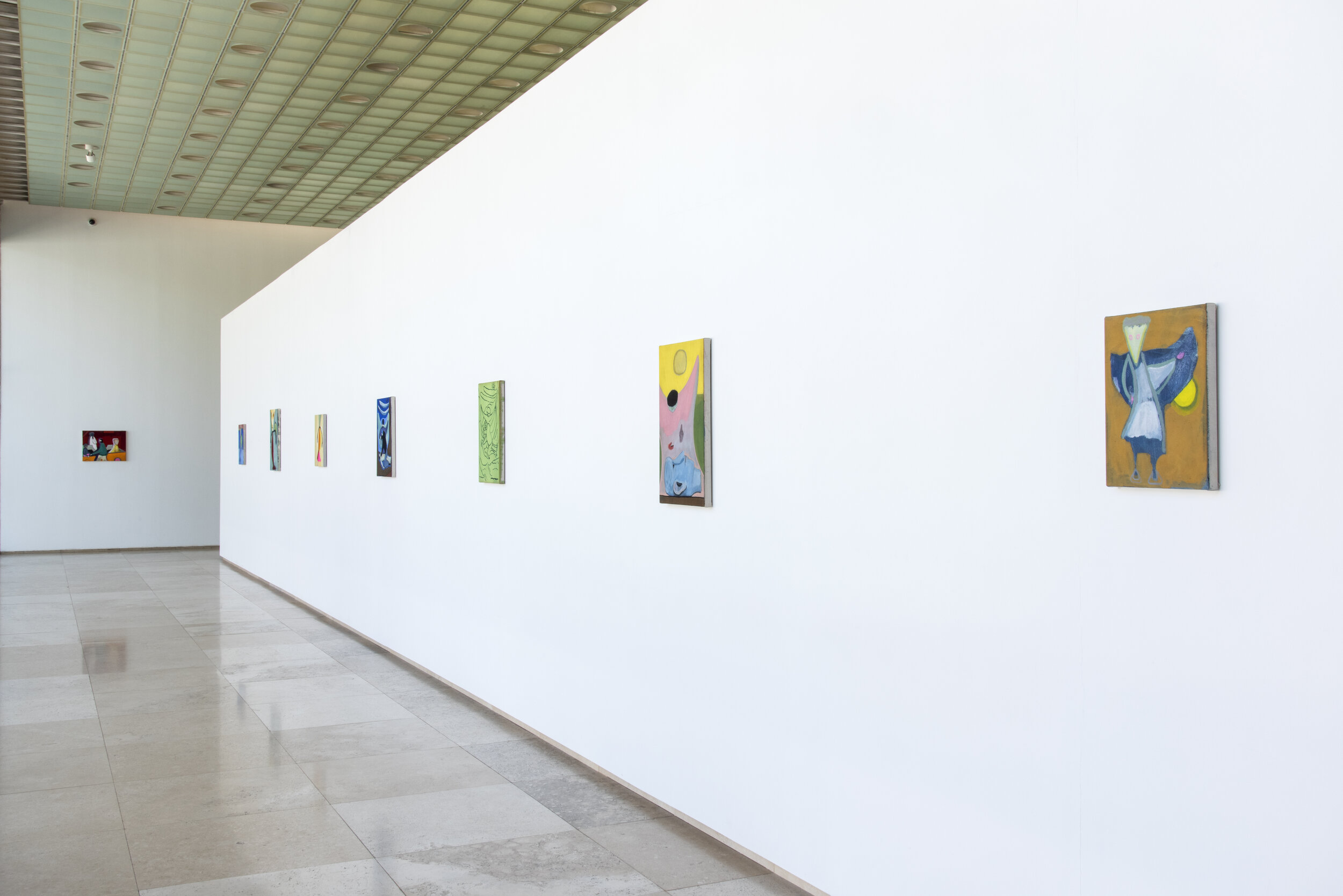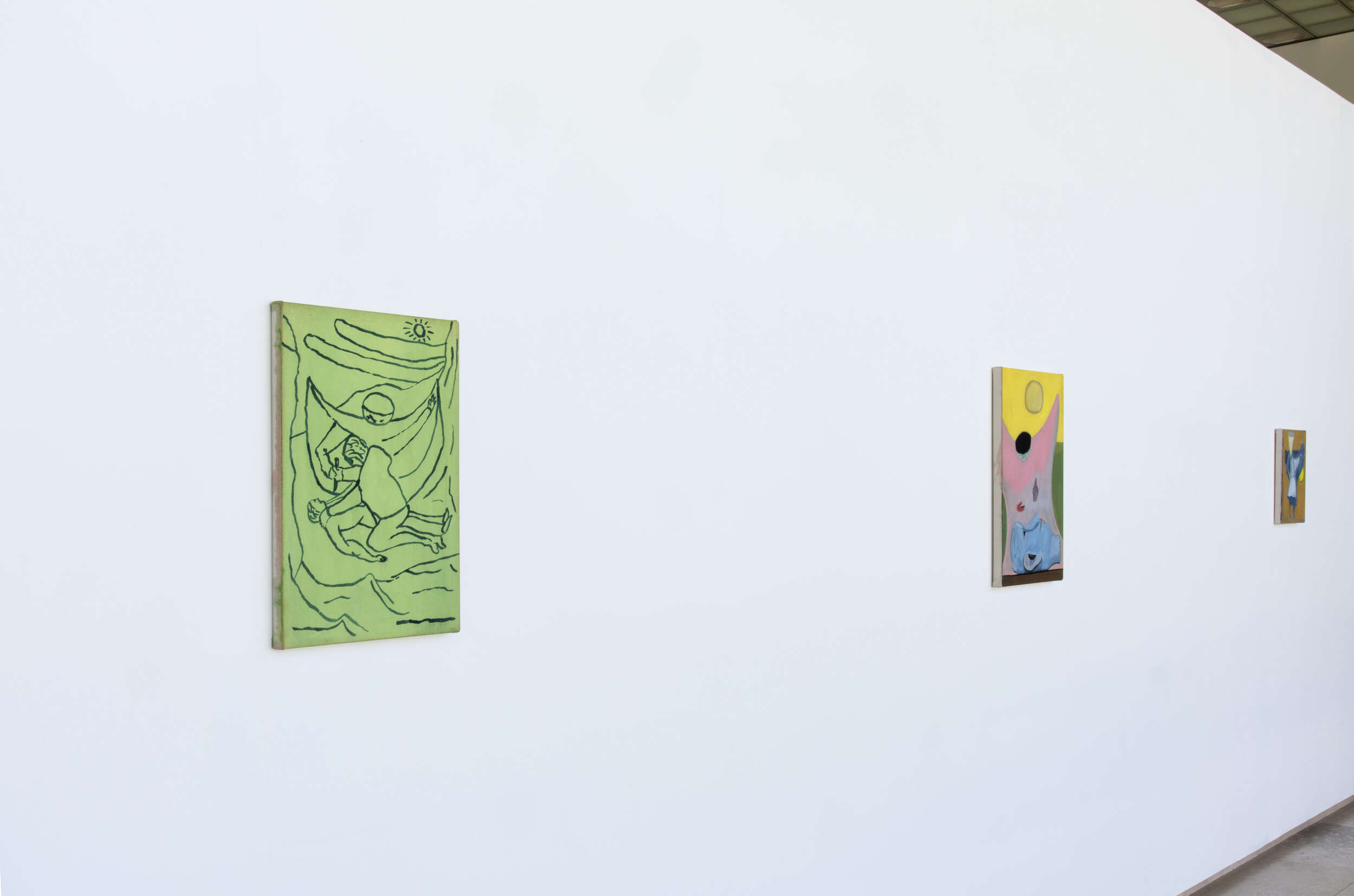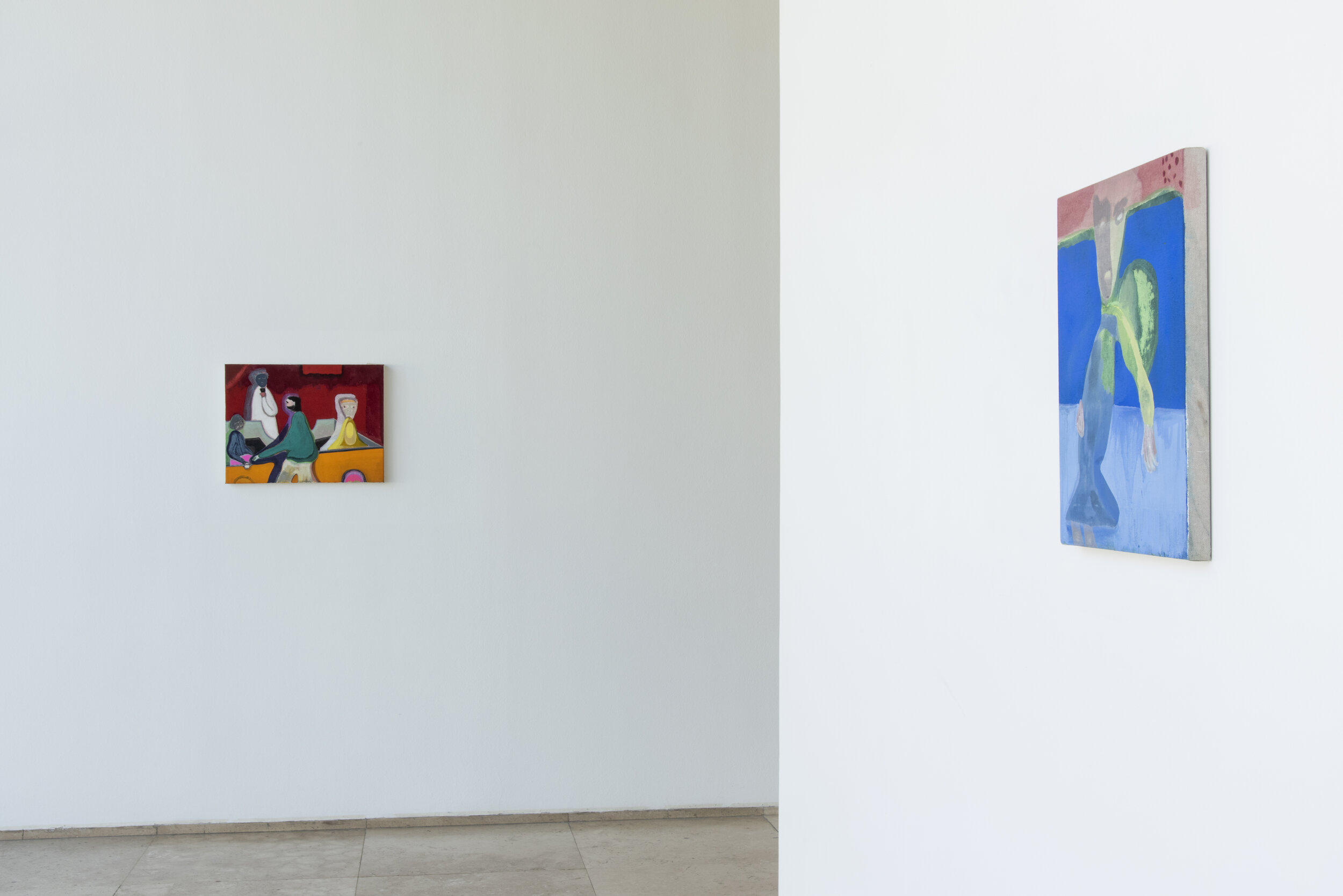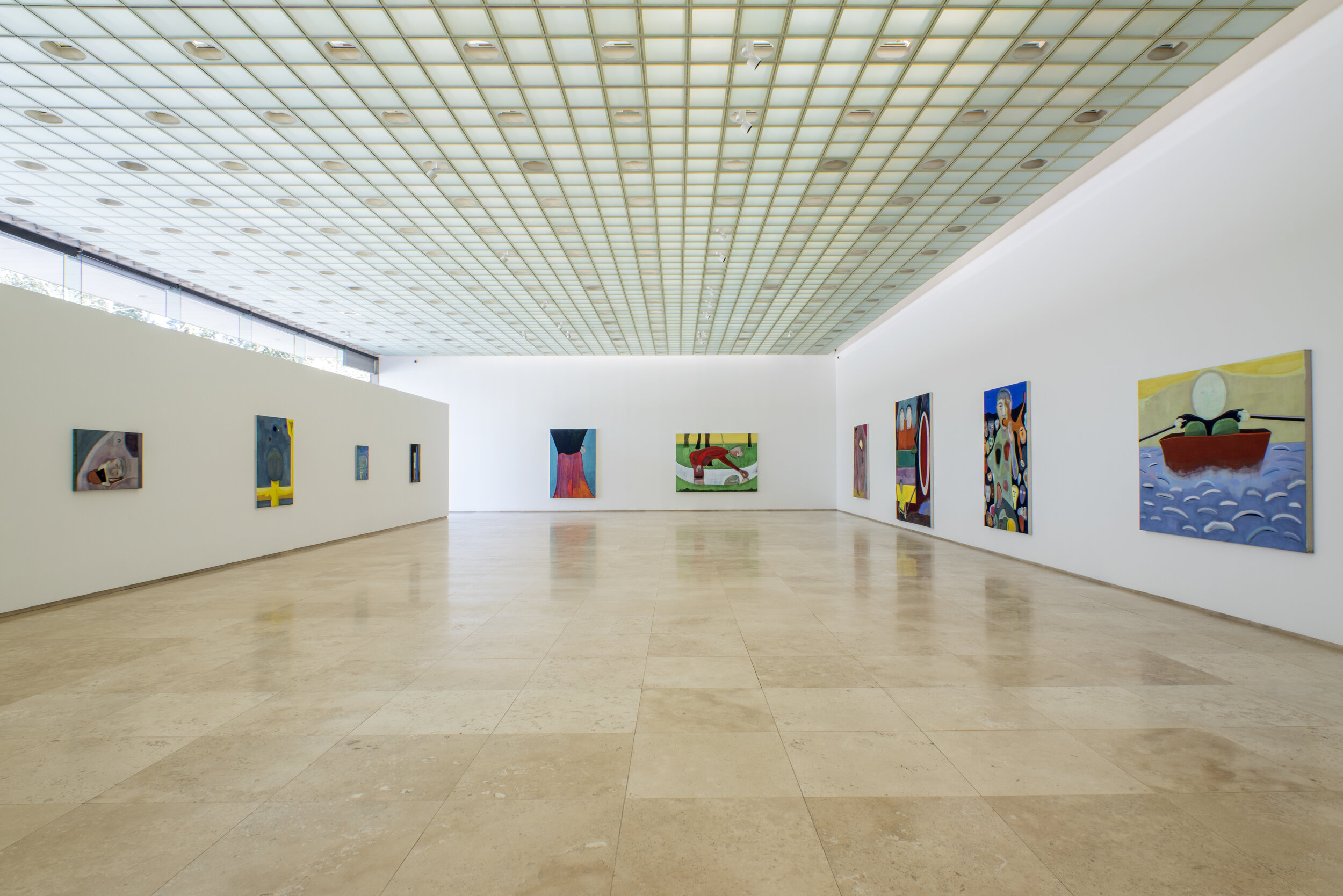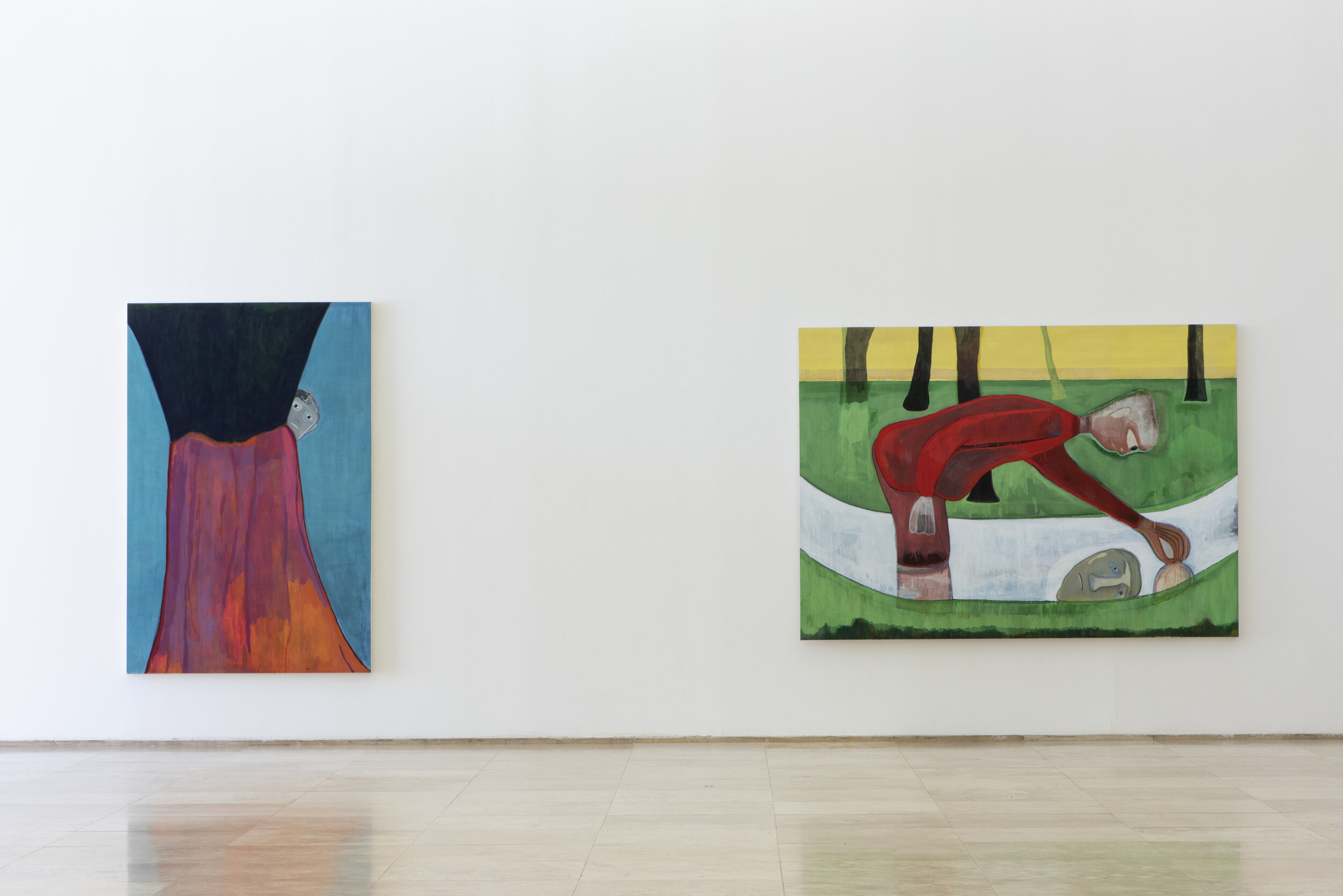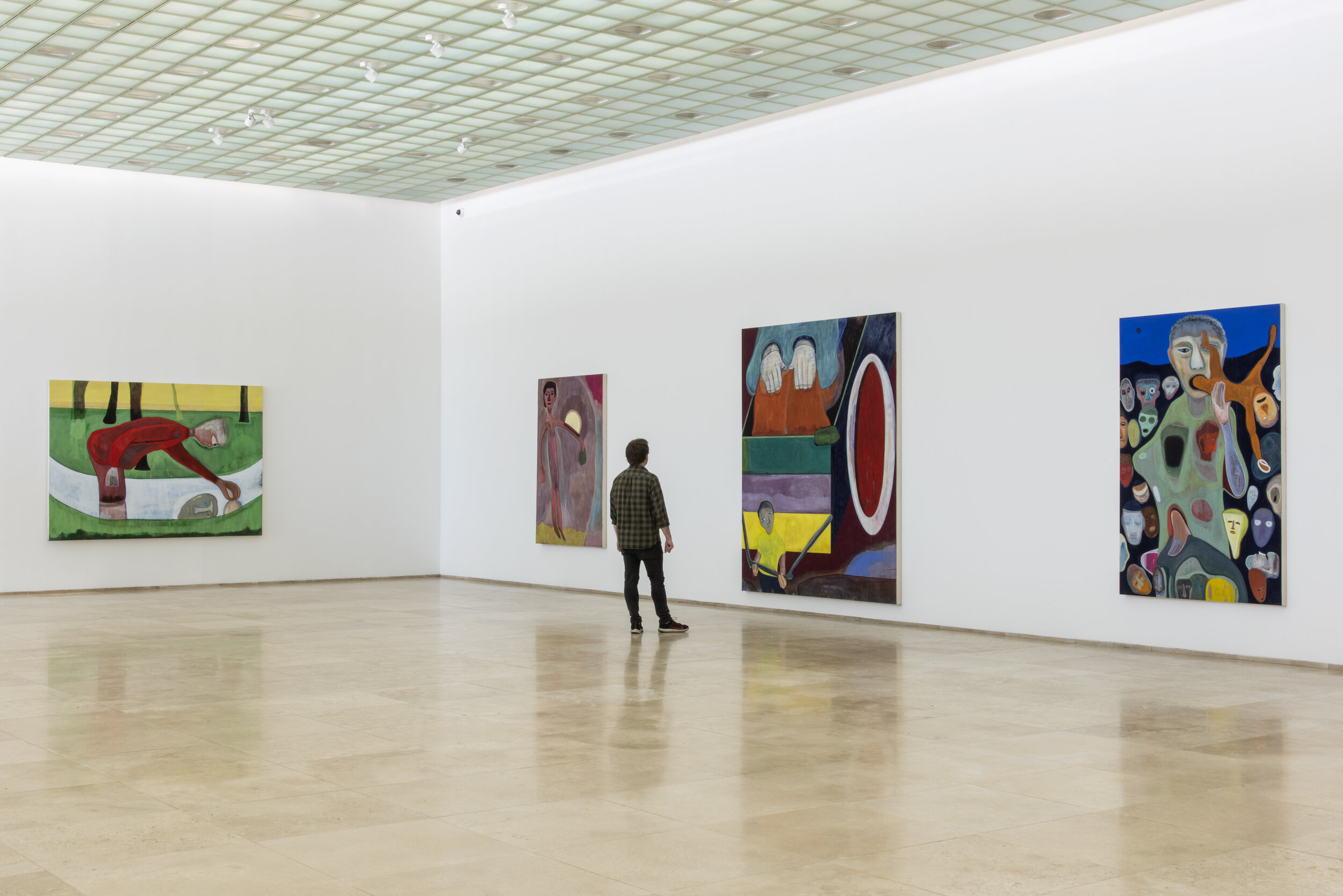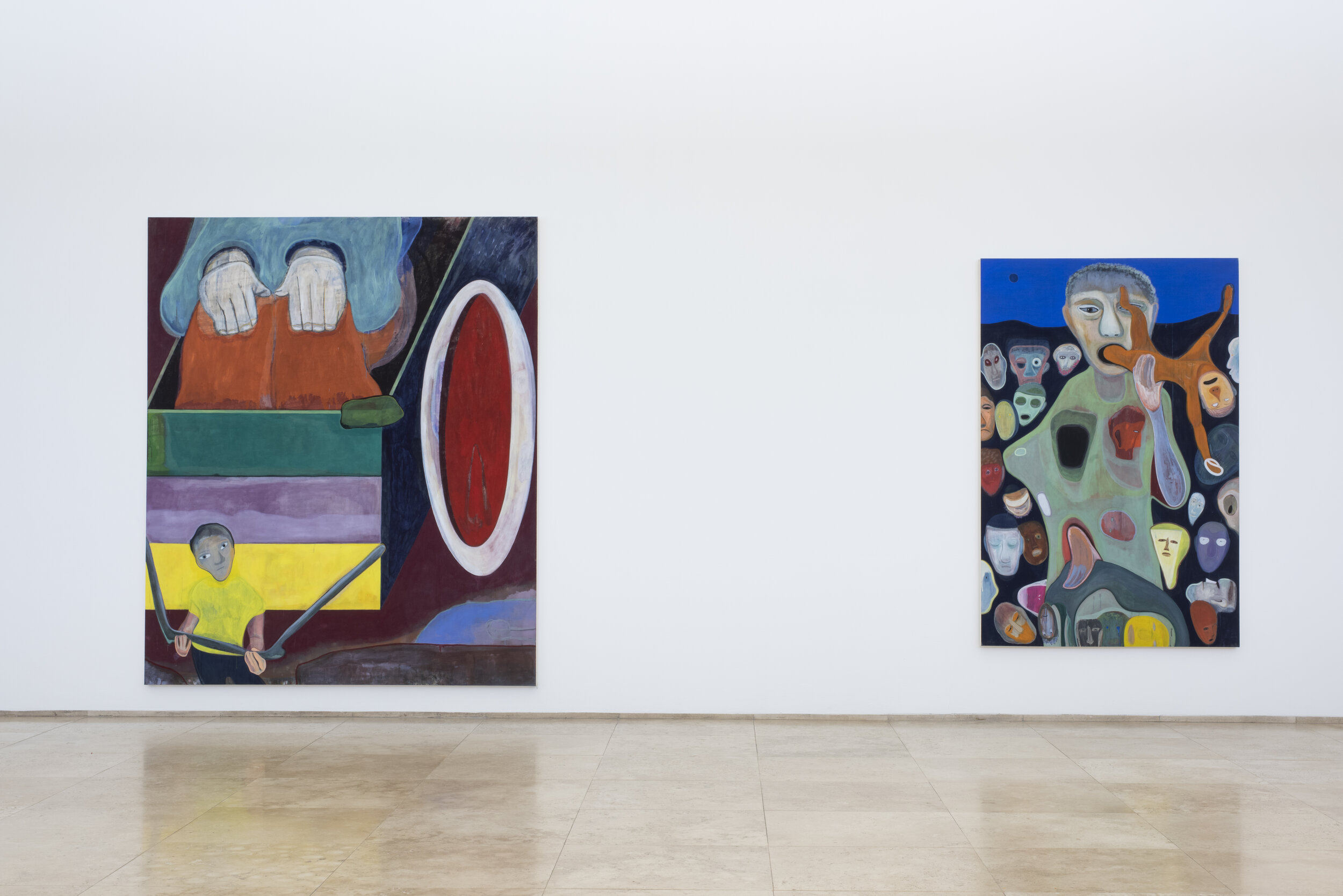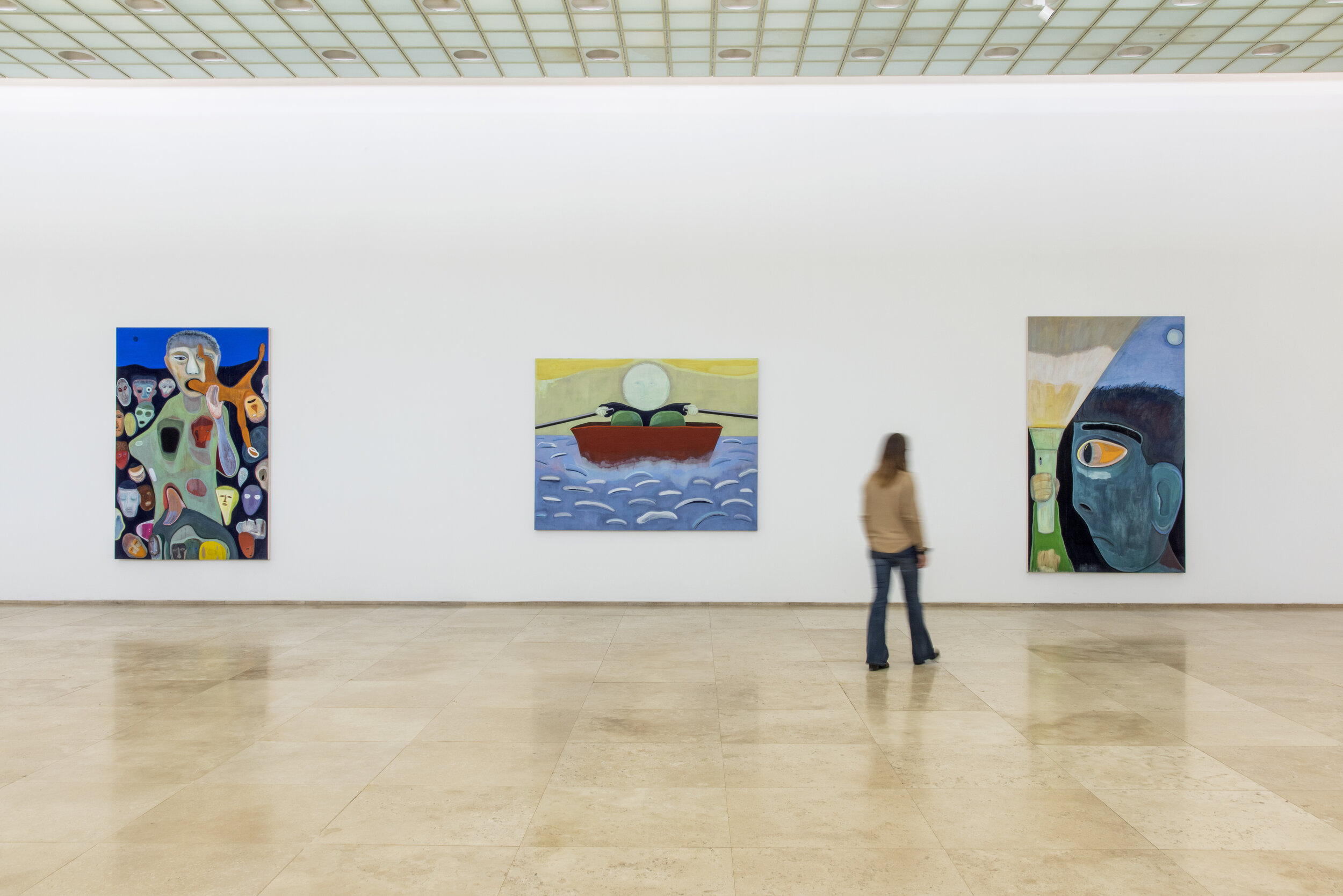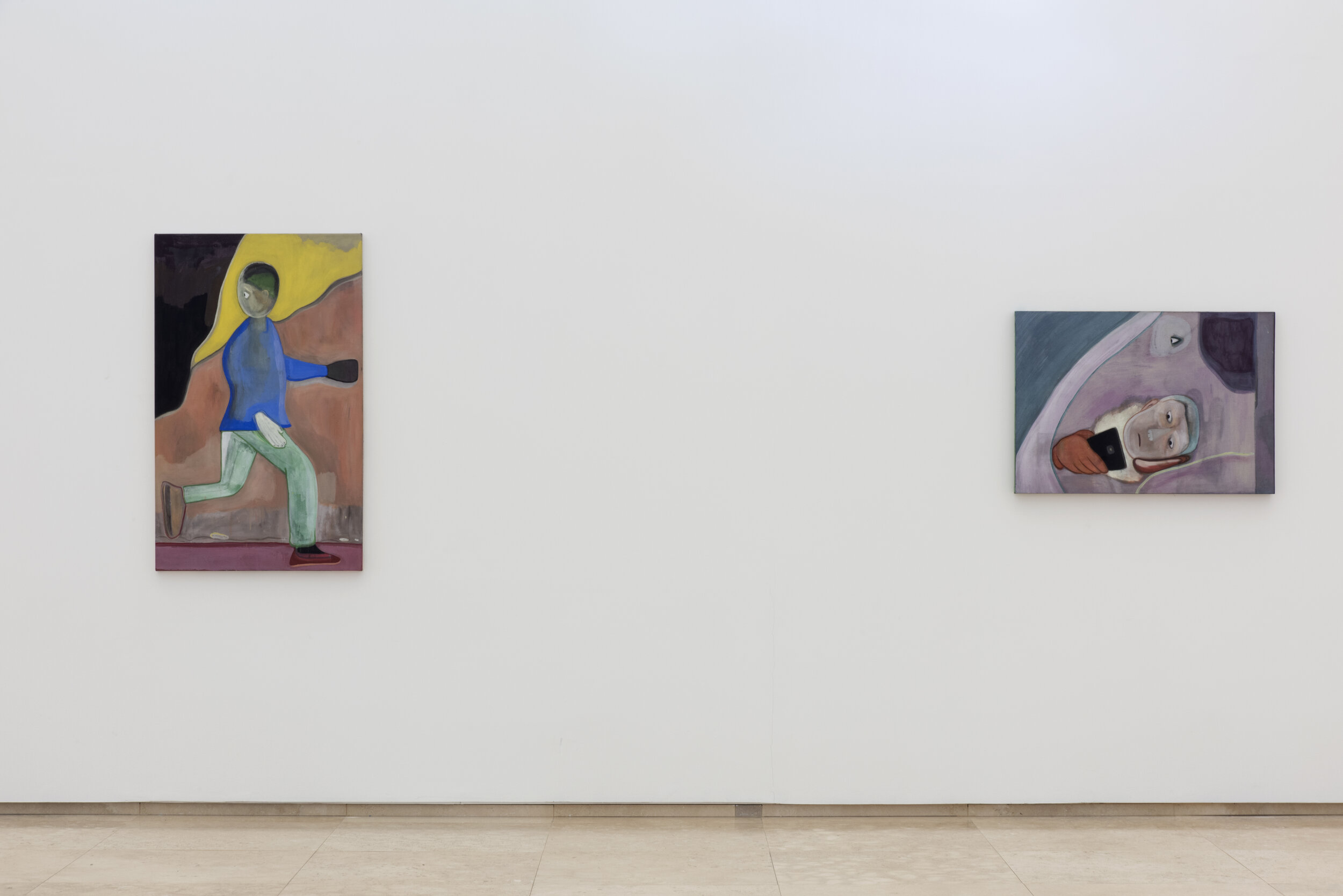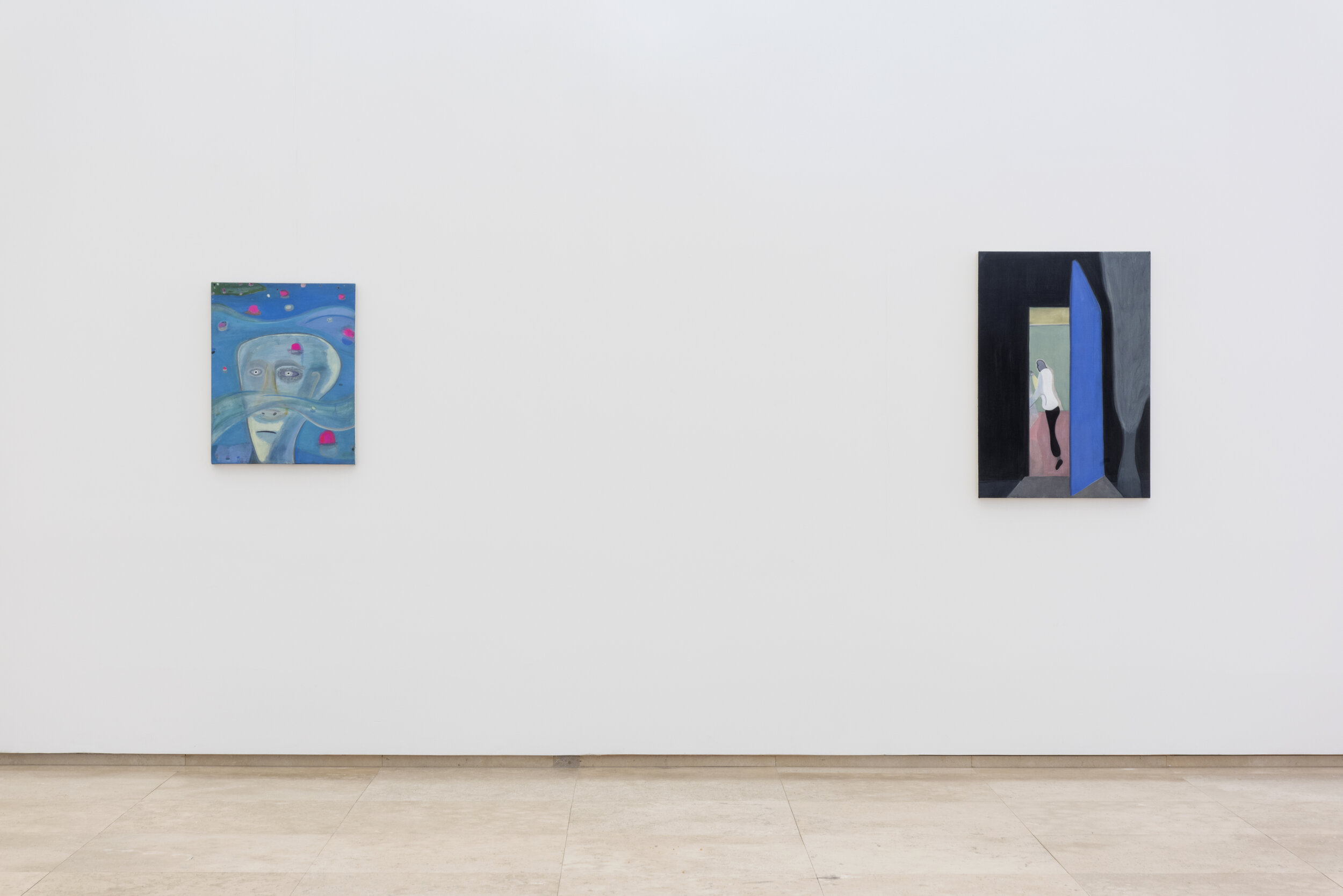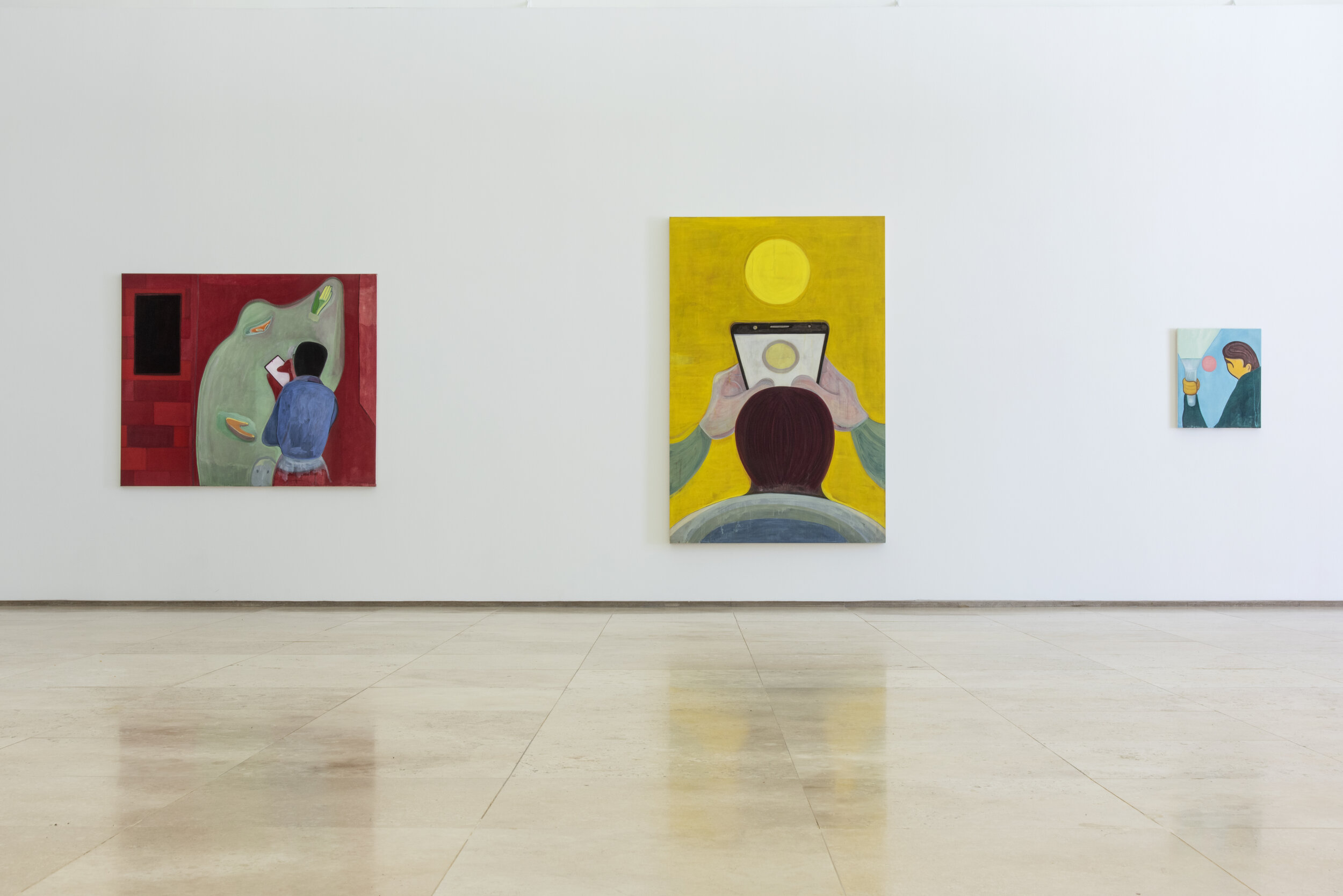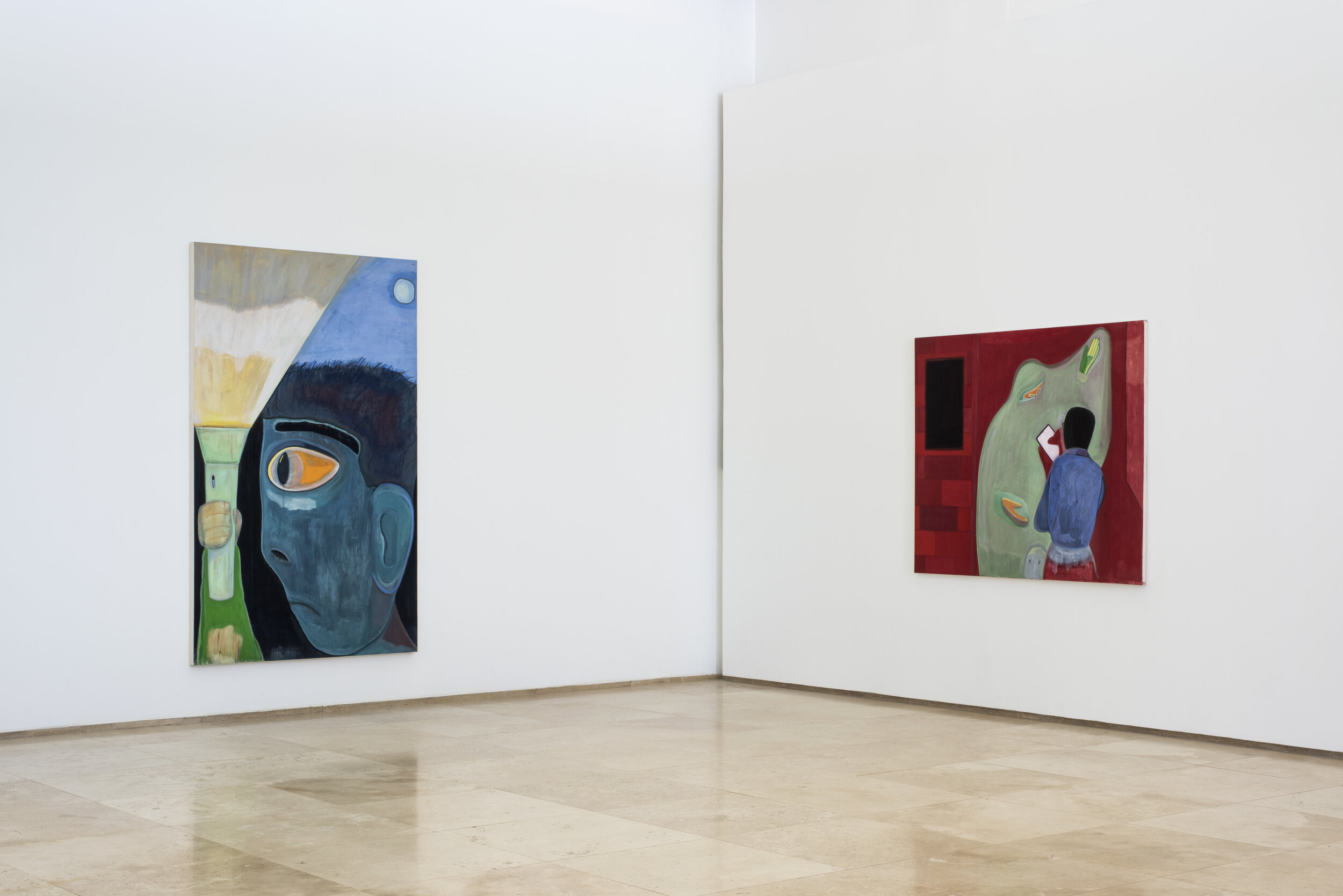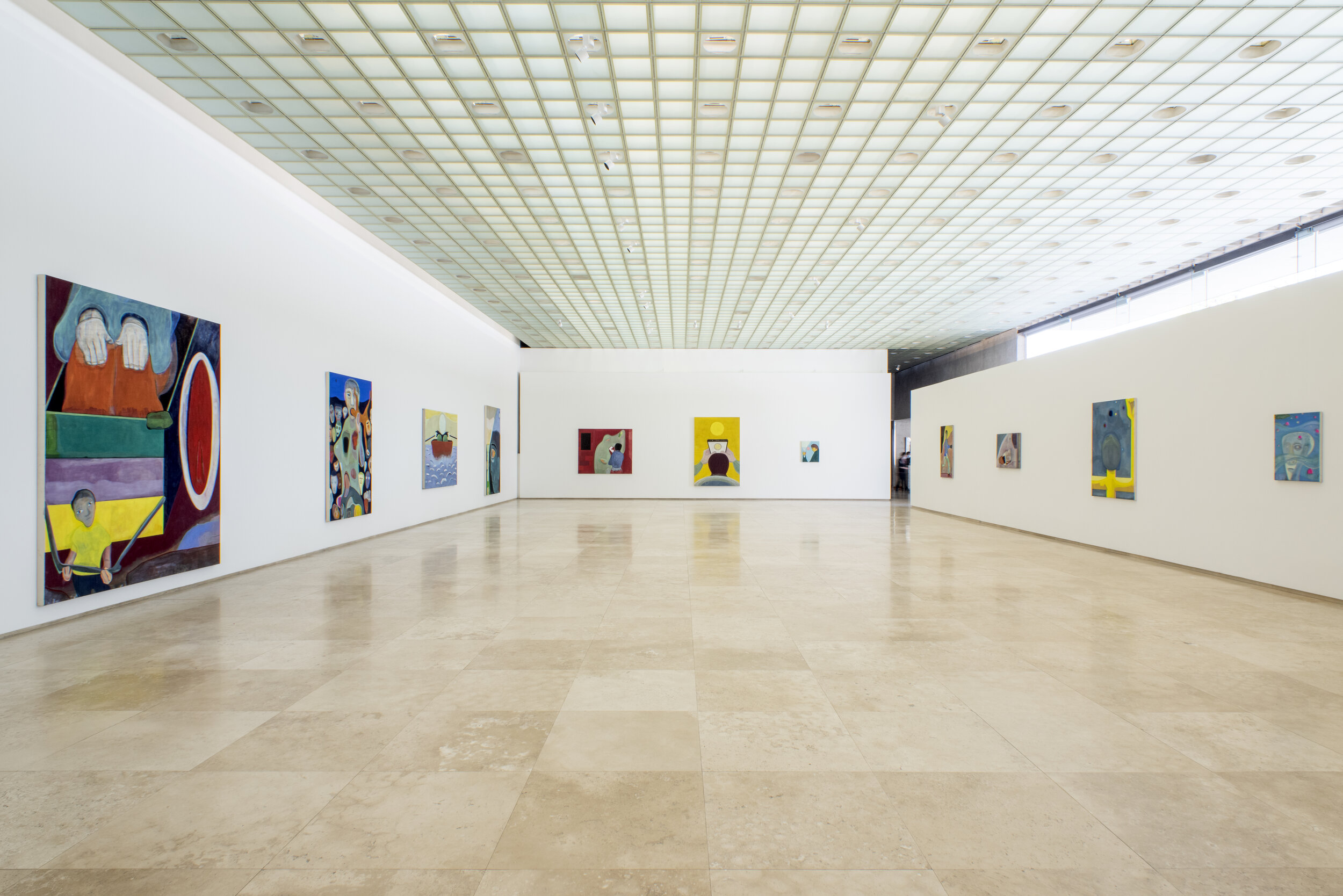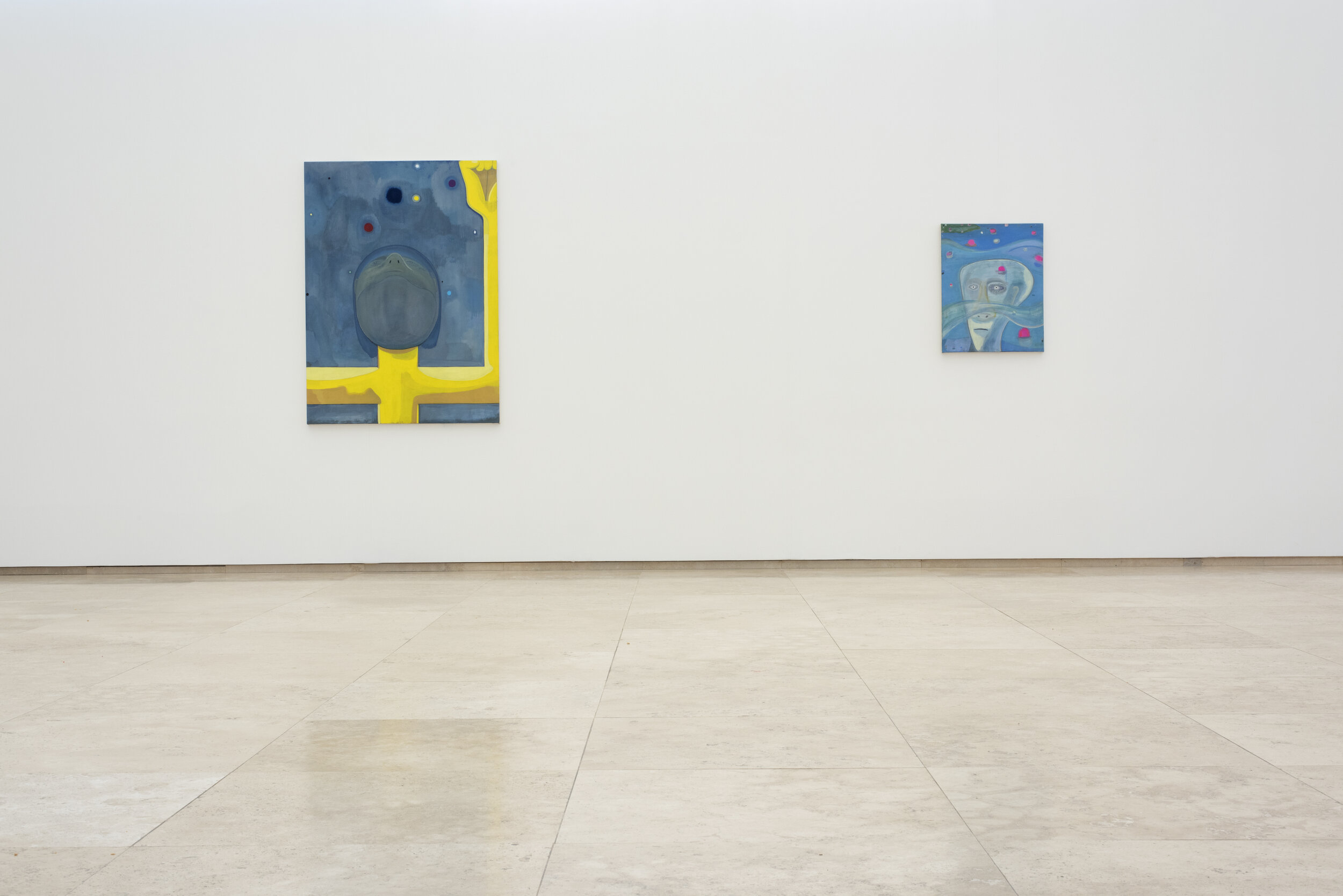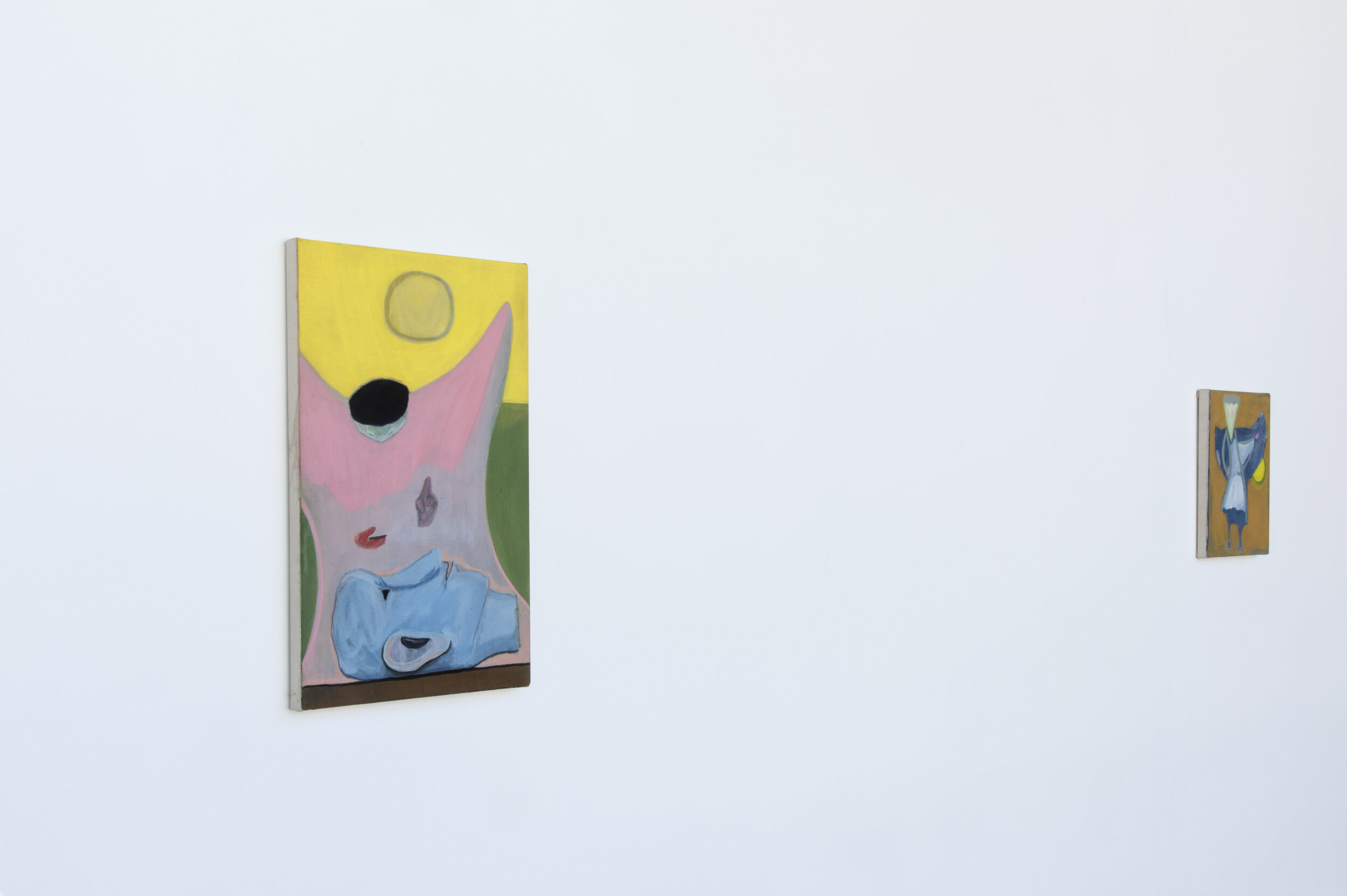Toda estrella es una ruina
Galería Patricia Ready. CL
Taking Shape
Terry R. Myers
The best paintings often express their culture not just directly but complimentarily, because it is by complimenting it that they are best designed to serve public needs: the public does not need what it has already got.
Michael Baxandall 1
Vicente Matte makes paintings that are very much personal. The inner life he provides them is the result of not only the stories they evoke but also the manner in which they are painted. Often derived from the day-to-day occurrences of family life, they embody intimacy while providing what the painting needs to thrive and fully participate in the public space that any painting enters the moment someone stands in front of it. His imagery makes clear his deep immersion in painting’s rich history, but somehow it is the almost floating quality of the surface effects of his paintings that securely grounds them in their own history, enabling them to be dreams and real life all at once. This happens mostly because Matte is so skilled at intermingling figure with ground, and vice versa, literally enabling the picture to appear as if it is taking shape right in front of our eyes.
There are, in fact, key aspects of certain paintings that emerged from the shapes Matte first put down, sometimes done in an earlier, smaller work (I don’t think it’s quite accurate to see these as studies): for example, it was the large shapes in Behind a Tree that evoked for him the small head peeking from behind them. The term “behind,” however, may be too fixed for the effortless fluidity of the painting’s overall composition, as the two blue shapes on either side of the tree are in no way content to be merely background. I think this effect is heightened by the fact that the two shapes of the tree itself are pink (transitioning wonderfully to orange) and black, making the painting as much of a story about colors as it is about that added head that recasts the entire picture as something that is happening at a specific moment while it also remains something that just is. That is precisely what great painting can do so magically, no matter where or when.
Matte makes it clear that he is interested in stories and pictures from many times and places: for example, the myth of Narcissus in relation to the perfectly titled Dear Progress, the atrocities of the god Saturn (by way of Goya) in New Moon, and, in The Searcher, the madman from Nietzsche’s story in The Gay Science who is searching for God in daylight while proclaiming him dead. This last painting may seem to the most contemporary due to the shift from the story’s lantern to a flashlight, but I would suggest that any of the depicted things that reference specific time periods are not concerned about making the work somehow “new.” This is confirmed in my eyes by another painting called Nostalgia (once again, like Dear Progress, a perfect title). Straightforwardly a picture of someone taking a picture of the sun with their mobile phone’s camera, the painting is strikingly anything but straightforward. Again it is a painting about shapes as much as if not more than anything else. In narrative terms, Matte sees it as an absurd and almost religious scene, and the painting definitely supports that interpretation, if only because such a scene taking place in real life could easily and equally be both.
That said, I stay focused on the title, Nostalgia. To my mind, nostalgia weakens more painting today than almost anything else. (Excessive earnestness is also on my list, but Matte gives his work more than enough strangeness to keep that away.) The narrative of the depicted aspects of the painting fight against it of course. Maybe this painting has been delivered to us from a future in which such a moment is no longer available or desired? It is less important to argue about the literal viability of this than it is to acknowledge that once again it is the painting’s use of shapes that activate
it outside of the parameters of any specific past or future. Put another way, the painting can be seen as being far more about the intermingling of figure and ground fully within the world of its four edges. Are those sections of concentric rings of color at the bottom part of the person’s body, or the landscape, or some kind of hallucination or visual aftereffect of the sun itself? For that matter, is that brown rounded shape the back of his or her head and neck or an absolute rift in the continuity of space and time? What about the arms and hands? They are the only things that could be seen as having come from somewhere beyond the painting: even the actual sun is kept fully in the material space and conditions of the painting while being reproduced in the picture-in-a-picture space of the mobile phone’s screen. Matte’s paintings take shape and use it to do many things, things that transform what we may already have from life into something we’ve never before really seen this way.
Note:
1. Michael Baxandall, Painting and Experience in Fifteenth-Century Italy (Oxford: Oxford University Press, 1972): 48.
Video
Video: Andres Lima
Tomar forma
Terry R. Myers
Las mejores pinturas suelen expresar su cultura no solo directa sino complementariamente, porque es complementando cómo sirven de mejor manera las necesidades del público: el público no necesita lo que ya posee desde un principio.
Michael Baxandall 1
Vicente Matte hace pinturas que son muy personales. La vida interior que él les entrega no es sólo el resultado de las historias que ellas mismas sugieren, sino también de la manera en que ellas han sido pintadas. Aunque suelen tener como origen uno de los tantos episodios de la vida familiar cotidiana, estas pinturas, sin perder su intimidad, proveen aquello que toda pintura necesita para prosperar y tomar parte de la esfera pública a la que toda obra se incorpora desde el momento en que uno se para frente a ella. Si bien su imaginario deja clara una inmersión profunda en la rica historia de la pintura, es esa cualidad cuasi flotante que se encuentra en estas pinturas la que de algún modo las asienta con firmeza en su propia historia, y les permite a la vez volverse sueño y vida real. Esto pasa por la notable habilidad de Matte para entremezclar las figuras con el fondo, y vice versa, haciendo que la imagen literalmente se nos aparezca como si estuviese formándose ante nuestros ojos.
De hecho, existen elementos claves en algunas pinturas de Matte que emergieron en un primer momento de un trabajo anterior, por lo general en un formato pequeño (los que no creo acertado clasificar como bocetos o estudios). Por ejemplo, las formas alargadas en Behind a Tree que evocaban para él la pequeña cabeza asomándose entre ellas. El término “behind”, en todo caso, me parece demasiado estrecho para dar cuenta de la fluidez natural que se encuentran en la composición general de esta pintura, pues los dos planos de color azul a ambos lados del árbol no se contentan con ser meramente el fondo. Pienso que este efecto se acentúa por las otras dos formas que conforman el árbol mismo, de color rosa (en un tránsito maravilloso al naranja) y negro. La pintura se vuelve entonces tanto una historia sobre los colores que la habitan como sobre esa cabeza añadida que transforma a la pintura en algo que sucede en un momento específico mientras permanece simplemente lo que es. Precisamente lo que las grandes pinturas pueden hacer, mágicamente, no importa dónde ni cuándo.
Matte deja claro que está interesado en historias y en imágenes de distintos tiempos y lugares. Se encuentran, por ejemplo, el mito de Narciso en relación con ese título perfecto, Dear Progress; las atrocidades del dios Saturno (a la manera de Goya) en New Moon; en The Searcher, el loco que, cuenta Nietzsche en La Gaya Ciencia, busca a Dios a plena luz del día mientras proclama su muerte. Esta última pintura me parece la más contemporánea por la linterna a pilas que reemplaza a la lámpara de aceite de la historia original, aunque yo diría que ninguna de las cosas representadas aquí que refieren a épocas concretas pretenden hacer de la obra algo “nuevo”. Esto lo comprueban mis ojos en otra pintura llamada Nostalgia (una vez más, como en Dear Progress, un título perfecto). Lo que sencillamente se muestra como la imagen de alguien que captura una imagen del sol con la cámara de su teléfono no tiene nada de sencillo en esta pintura. Una vez más, se trata de un cuadro sobre las formas, tanto o más que sobre cualquier otra cosa. En términos narrativos, Matte ve en ella una escena absurda y casi religiosa, y me parece que la pintura definitivamente apoya esta interpretación, acaso porque si una escena como esta ocurriese en la vida real, podría ser, fácil e igualmente, las dos cosas a la vez.
Dicho esto, me quedo en el título de la obra, Nostalgia. Me parece que es la nostalgia, más que cualquier otra cosa, lo que menoscaba a la pintura actual. (Un exceso de sinceridad también es otro problema, pero creo que Matte imprime suficiente extrañeza en su trabajo para mantener eso a raya). Es la narrativa de lo representado en la pintura lo que lucha contra ese sentimiento, por supuesto. ¿Habrá sido esta pintura despachada a nosotros desde un futuro donde un momento así ya no se encuentra a la mano o ya no es deseado? Discutir sobre la posibilidad de que esto realmente haya sucedido no es tan importante como tomar conciencia, una vez más, de que es el uso de la pintura sobre sus formas lo que la hace actuar por fuera de los parámetros de cualquier pasado o futuro específico. Para decirlo de otro
modo, la pintura puede ser vista fundamentalmente como el entrecruzamiento de la figura con el fondo al interior de ese mundo de cuatro esquinas. ¿Son parte del cuerpo de la persona esos anillos concéntricos que se encuentran abajo, o son el paisaje, o son una especie de alucinación o imagen residual del mismo sol? ¿Y qué hay de esa forma redonda color café, es la unión de la cabeza y el cuello, o una grieta en la continuidad del espacio y el tiempo? ¿Y los brazos, y las manos? Parecen ser las únicas cosas que provienen desde algún lugar más allá de la pintura: incluso el sol es contenido completamente dentro del espacio material y bajo las condiciones de la pintura mientras es reproducido en el espacio de la imagen-dentro-de-la-imagen que es la pantalla del teléfono. Las pinturas de Matte toman forma, y hacen uso de ella para hacer muchas cosas, cosas que transforman lo que ya tenemos en nuestras vidas en algo que nunca habíamos visto de esta manera.
Nota:
1. Michael Baxandall, Painting and Experience in Fifteenth-Century Italy (Oxford: Oxford University Press, 1972): 48.
Installation Views
Photos: Jorge Brantmayer
Selected Works
Behind a Tree, 2021
Distemper on canvas
230 x 152 cm
Eclipse, 2021
Distemper on canvas
208 x 145 cm
Fullmoon, 2021
Distemper on canvas
170 x 220 cm
Ocaso I, 2021
Distemper on canvas
47 x 39 cm
Linterna, 2021
Distemper on canvas
70 x 59 cm
Ruina, 2021
Distemper on canvas
64 x 40 cm
Abraham, 2021
Distemper on canvas
58 x 44 cm
In the bed, 2021
Distemper on canvas
70 x 100 cm
New Moon, 2021
Distemper on canvas
230 x 152 cm
The Searcher, 2021
Distemper on canvas
250 x 152 cm
In the city, 2021
Distemper on canvas
150 x 180 cm
Ocaso III, 2021
Distemper on canvas
50 x 40 cm
Retrato reflejado, 2021
Distemper on canvas
73 x 58 cm
Angel, 2021
Distemper on canvas
40 x 30
Toda estrella es una ruina, 2021
Distemper on canvas
150 x 110 cm
Dear Progress, 2021
Distemper on canvas
190 x 270 cm
Nostalgia, 2021
Distemper on canvas
230 x 152 cm
Green Rock, 2021
Distemper on canvas
280 x 233 cm
Juntos, 2021
Distemper on canvas
46 x 60 cm
Ocaso II, 2021
Distemper on canvas
66 x 46 cm
El huidor, 2021
Distemper on canvas
130 x 80 cm
Abraham II, 2021
Distemper on canvas
57 x 38 cm
Studio, 2021
Distemper on canvas
100 x 70 cm
Photos: Jorge Brantmayer


